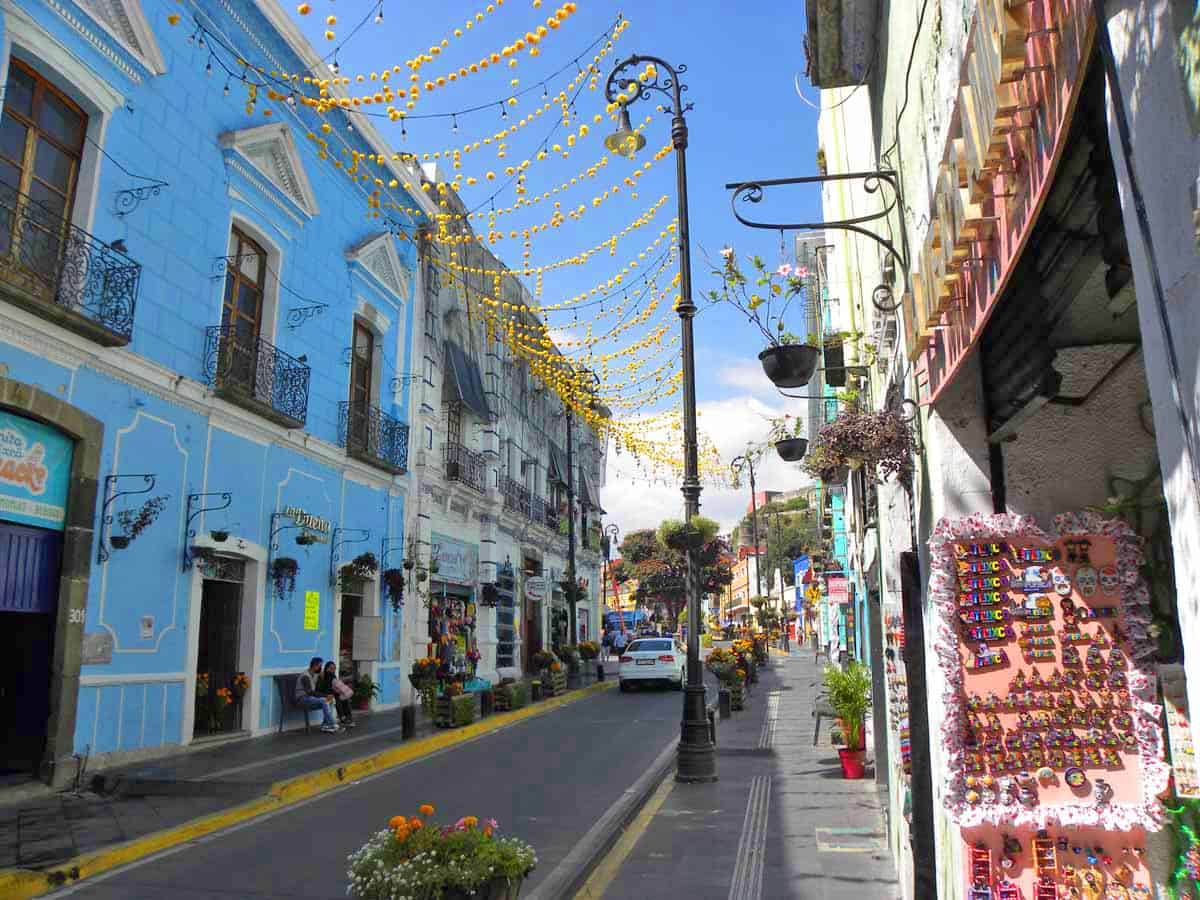Atlixco: Mexico’s Prettiest Pueblo Magico?
Atlixco, or “Atlixco de las Flores” as it is often referred to, is the prettiest Pueblo Magico I’ve been to. It’s not a big place. You can see everything in Atlixco within a few hours. But I guarantee you’ll be charmed by this town.
The town is 30 to 45 minutes from the city of Puebla (depending on traffic) by taxi or bus (Oro bus from CAPU station in Puebla).

What to see in Atlixco
Start in the beautiful main square (or Zócalo). It is colourful, the square full of trees and flowers. In its center is a large coffee shop, The Italian Coffee Company. You might think the idea is tacky but it’s a large coffee shop constructed with green tiles that fits right into the décor. The rooftop is a wonderful place to get a 360 view of the square.
Around the square are some of the prettiest buildings in town including the church (Parroquia de Santa María de la Natividad) and Palacio Municipal. Enter the building (free) to see some beautiful murals by artist Juan Manuel Martínez Caltenco which depicts some of Atlixco’s history and culture.


Back outside, you’ll see lots of restaurants, flowers, and some pretty tiled benches. On one side of the square you might see the tourist tram (next to Gelateria italiana) – a good way to see the town, it even takes you most of the way up Cerro de San Miguel (the hill that looms over town. I’ll cover that below).

South of the Zócalo (a 5 minute walk) is the Mercado Benito Juarez. If you like to visit local markets this is a good one. Lots of cheap eats. Walking to the market you’ll pass the mustardy La Iglesia de San Agustín which is worth a look.
Walk back the two blocks to the Zócalo and turn left on Hildago. It’s a very pretty, very colorful street with cafés, restaurants and souvenir stores. Trees and flowers line the street.


You’ll get to a junction in the street where you’ll see the statue of Hildago (Miguel Hidalgo was a Catholic priest, leader of the Mexican War of Independence and is recognized as the Father of the Nation). Stick to the right, going up the colourful Calzada 16 de Septiembre. It’s a beautiful little street full of potted plants and colourful murals. Don’t miss La Escalera Ancha a couple of blocks up – you might not even realize you’re there looking down the steps. It’s only when you go down and look back up that you’ll see the colourful ‘mural’ painted along the flight of stairs.



Back up the stairs, you’ll see the Ex-Convento de San Francisco which is worth a visit. You’ll have to cross through a little park and work your way up some steps to get to it. Built it the 1500’s, it was completed in 1620. It belonged to the Franciscans and was dedicated to evangelizing the natives of the area.

This is the starting point for a walk to the top of the Cerro de San Miguel. There are a few ways to get there but I suggest doing what I did: following the small street (Cvln. Tlaloc). It winds around the hill, bringing you (after about 15 minutes) to a mirador. This is Mirador Cerro De San Miguel. There is a small outdoor theatre here (looks like a modern Roman theatre) where events regularly take place. If you’ve taken the tourist tram from the center (which I previously mentioned) it will drop you off near the mirador.
From the mirador you have some steps to climb to the very top of the hill where the small chapel is located (Capilla San Miguel Arcángel). From here you have views over the city – but the highlight if the skies are clear, is the view of Popocatépetl volcano (an active volcano that regularly shoots out ashes). I was unlucky but here is a photo by Atlixco tourism of Cerro De San Miguel with Popocatépetl in the background.
As you can see above, Atlixco is stunning. Very much worth the visit. And being close to Puebla – and small enough – means that you can easily explore it all on a day trip.
It gets my vote as the prettiest Pueblo Magico in Mexico.














Leave a Reply